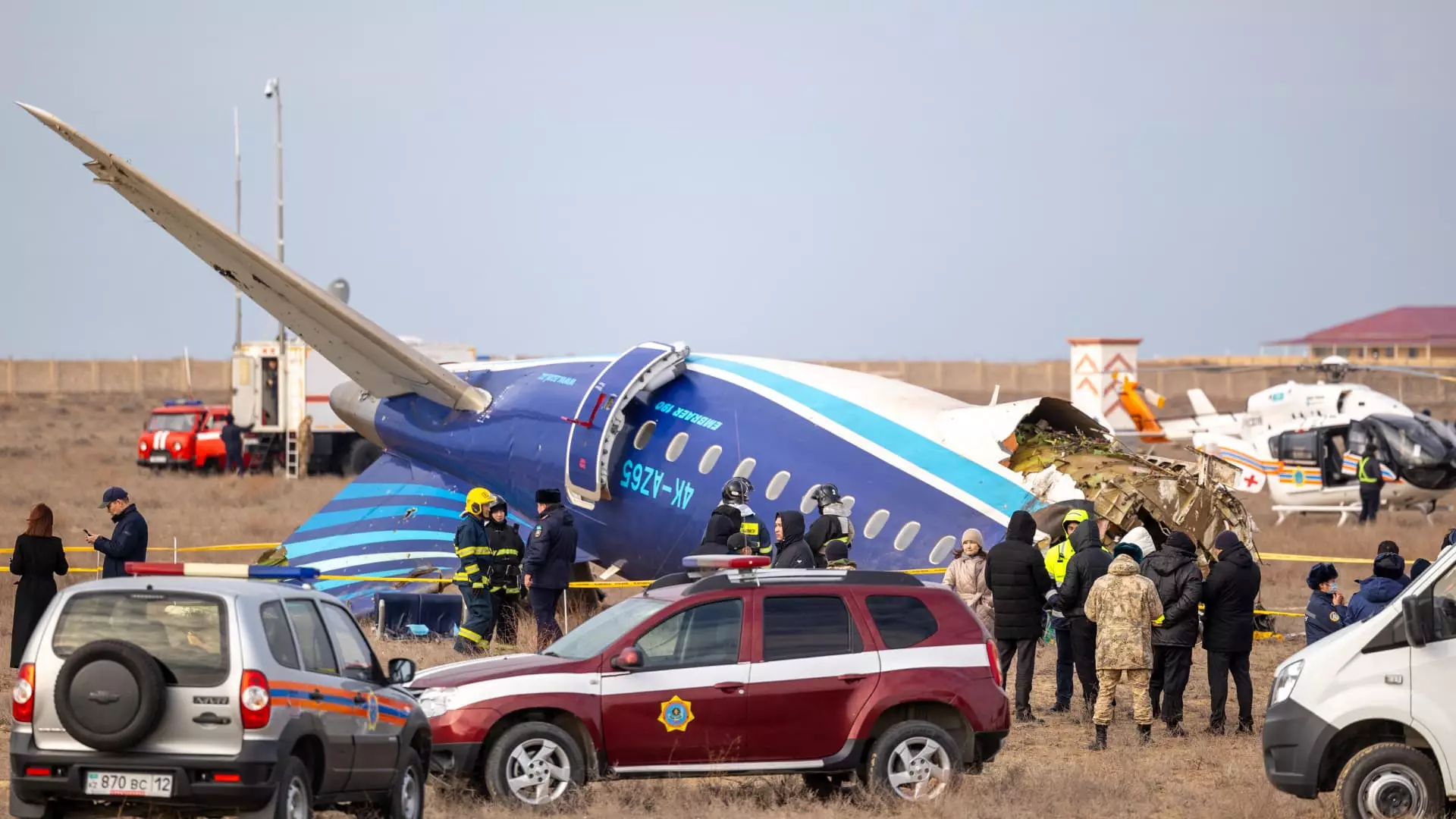In a devastating event that unfolded over the Caspian Sea, an Embraer passenger jet operated by Azerbaijan Airlines met with a tragic fate on Wednesday. This incident has stirred substantial concern among aviation authorities and the public alike, given the complex circumstances surrounding the flight that departed from Azerbaijan and intended to reach Russia. With reports indicating that 62 passengers and five crew members were onboard, the aftermath has left a profound mark on the affected families and international relations.
The unfortunate flight J2-8243, originating from Baku, was bound for Grozny, located in the southern Chechnya region of Russia. Yet, under an alarming twist, it veered significantly off course before ultimately crashing near Aktau, Kazakhstan. Russian aviation authorities pointed towards a possible bird strike as a triggering factor for this unprecedented deviation and emergent landing decision, urging a deeper investigation into the operational protocols of the airline.
The dramatic alteration of the jet’s path has raised multiple questions about its navigational decisions. Typically, such an emergency landing calls for strategic planning, and the choice to divert to Aktau, which lies on the opposite coast of the Caspian Sea, will inevitably come under scrutiny. Flight tracking data suggests that after losing signal, the plane re-emerged circling near Aktau Airport before tragically impacting the shoreline. This series of events illustrates not only the fragility of air travel but also the performance of emergency protocols when faced with unforeseen circumstances.
The immediate aftermath of the crash saw a swift response from Kazakh authorities, who reported that 32 survivors were rescued from the wreckage. Disturbing visuals surfaced showing injured passengers escaping from an element of the fuselage that remained relatively intact. The harrowing sight of bloodied and bruised individuals struggling to exit their perilous situation highlights the profound psychological and physical impacts this incident will carry for those directly involved.
Survivors, including two children, were promptly treated at a local hospital, emphasizing the urgency of rapid response mechanisms in such crisis situations. However, the somber reality is that many families are now grappling with the loss of their loved ones, as the bodies of those who did not survive are being recovered. This tragic loss accentuates the emotional turmoil that emanates from aviation disasters, often leaving lasting scars on the families and communities of the victims.
As the incident unfolds, it is crucial to consider the broader context, including the recent uptick in drone strikes in southern Russia, which may have influenced aviation operations in the region. On the same day as the crash, airports in proximity to the intended flight path faced closures due to drone activity. This connection raises pressing questions regarding the safety of aviation routes in increasingly volatile geopolitical climates and the measures being taken to safeguard passenger air travel.
Kazakh authorities have commenced an investigation, promising cooperation with Azerbaijan as they work toward understanding this calamity. The tragic event also drew responses from notable political figures. Russian President Vladimir Putin and Azerbaijani President Ilham Aliyev both expressed condolences, marking this incident a significant point of concern within bilateral relations. The Kremlin-backed leader of Chechnya, Ramzan Kadyrov, also reflected on the gravity of the situation, emphasizing the precarious state of some injured survivors.
As the investigation into the Aktau crash continues, it is imperative that aviation safety measures are rigorously evaluated and improved, especially in light of evolving geopolitical instabilities. The loss of life in such incidents highlights the critical need for better risk assessment, crisis management, and coordination among international aviation entities. Ultimately, the hope remains that this tragedy leads to actionable insights that fortify the global aviation landscape, ensuring that flights are safeguarded against perilous situations, thus preventing future catastrophes.

Leave a Reply